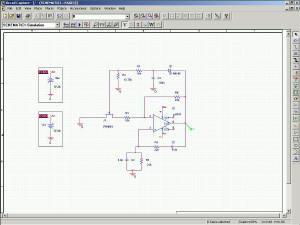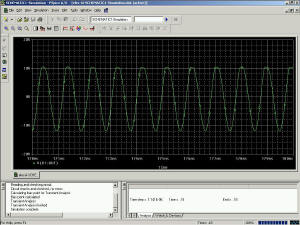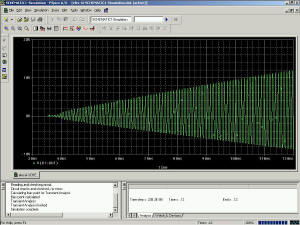Date Completed: February 06, 2003
In this experiment , an oscillator is constructed using an operational amplifier and some other passive elements .This configuration for the oscillator is called Wien Bridge.
A positive feedback is applied using R4, R5, C1, and C2 elements. That's the driving force for the construction of the oscillator.
The frequency of the oscillator is determined by R4, R5, C1, and C2 elements. In this circuit, they are chosen so that the frequency is 1 khz . The feedback coefficient (β) is 1/3 in this circuit, so gain is chosen 3 or higher to fullfill the Barkhausen oscillation criterion.
The negative feedback applied using FET+R3 and R6 determines the gain and because of very existence of the FET, the output won't be clipped. The FET works as an AGC: when the output voltage decreases, the magnitude of the negative voltage on the gate of the FET increases, causing its resistance Rds to increase and therefore decreasing the gain of the oscillator ( 1+R6/(R3+Rds) ). This decrease in the gain causes the output not to clip.
The Orcad 9.2 ( Cadence Design Systems Inc. ) project and above snapshots are also included and available for download .


